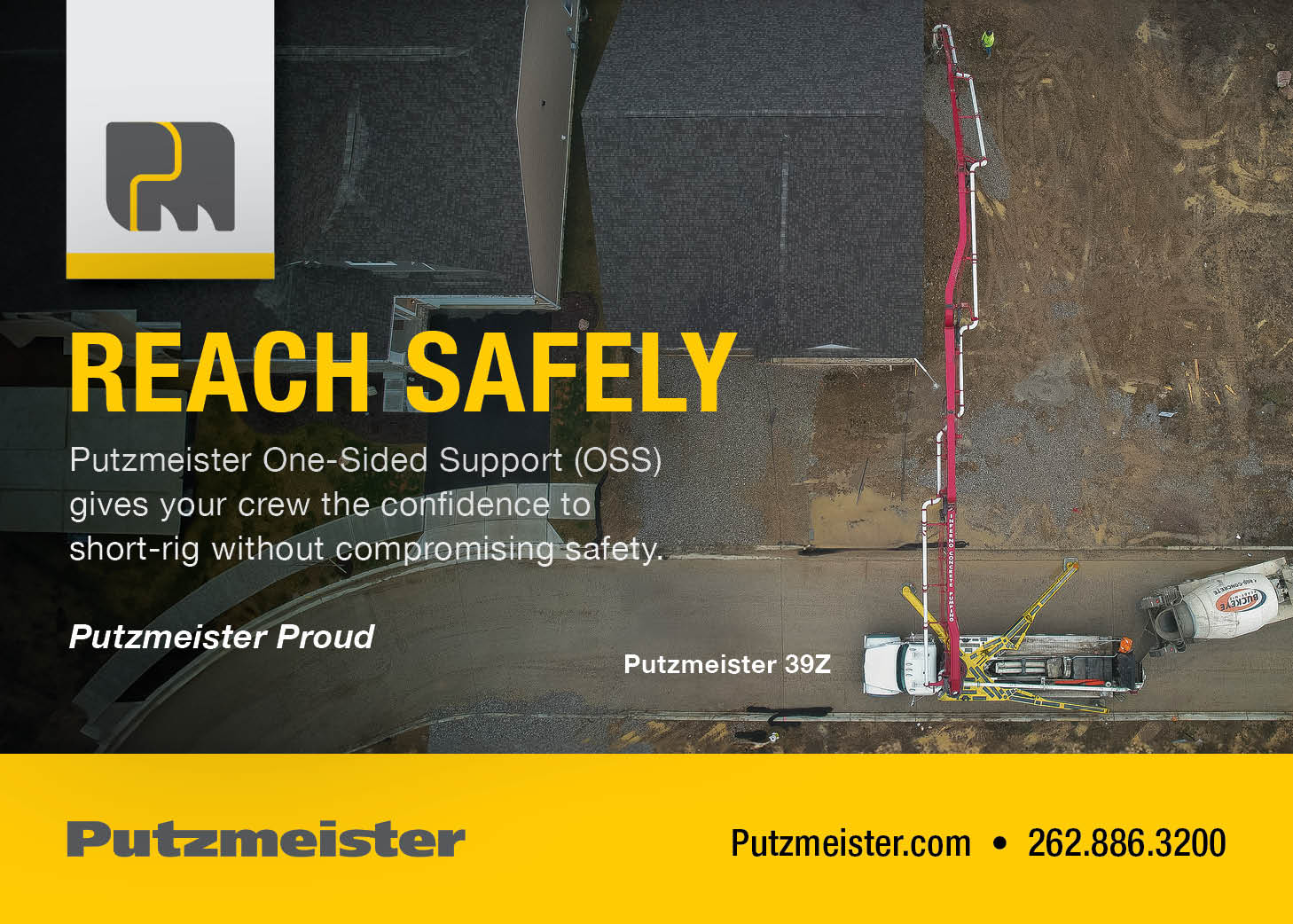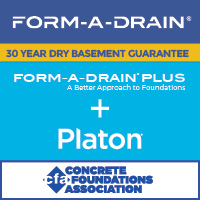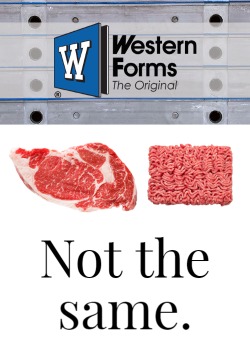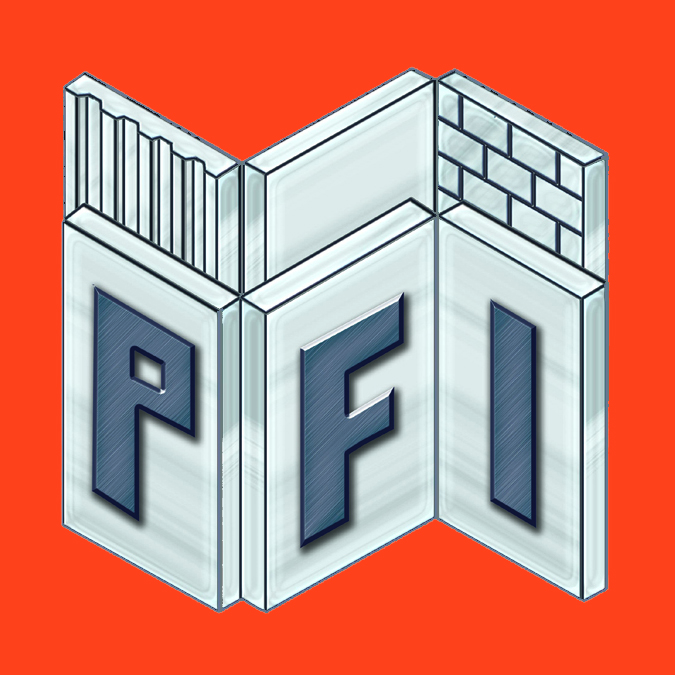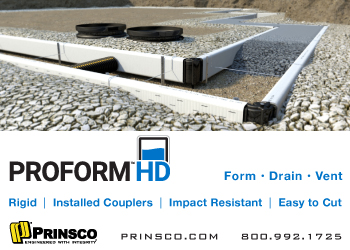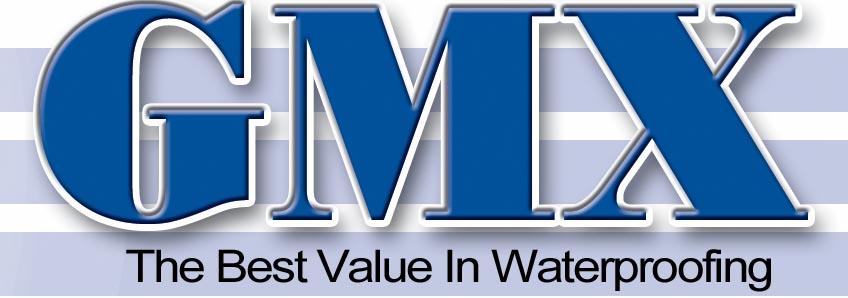Technology: The Key To Successful Growth
I have the dubious task of authoring a substitute for the inspirational letters you have grown accustom to this past year from our current CFA President, Terry Lavy. I know you will look forward to his next letter in issue five, as he makes his way back from some health issues we are glad to say he has overcome.
To those of you who attended the Summer Meeting this last month in San Francisco, you likely found some humor and great relief in my latest gadget aimed at streamlining our registration process…my barcode scanners. You see, I have heard so many stories from CFA contractors that have embraced improved technologies in their daily businesses such as robotics, job time equipment and of course the many concrete pumps, conveyors and knuckleboom truck cranes that have become the staple of the foundation contractor’s fleet. It was high time that we too embraced available technology to improve our ability to move you quickly into our many events and what a success it was.
Over the next few issues, you will find articles that discuss with greater detail, the other new technology that we have instituted on your behalf. Many of you have read and hopefully kicked the tires on the online engineering software that has been developed exclusively for the CFA featuring an interface designed for regular use by the foundation contractor. Through our partnership with CECSoft, both the basement wall design program and the newly added retaining wall design program have become great additions to the technology available at your fingertips. We are committed to helping you become intimately comfortable with these packages so together we can plan the future modifications and additions to these products.
One way we intend to do this is with another addition of technology to our efforts. Through the online collaboration system provided by WebEx, we offer monthly opportunities for you to register for one-hour online training sessions. These will be hosted by your CFA staff and will allow you to watch the design programs in action while helping you understand the ease of use, and the process that can follow, to leave you with engineering support for these designs. Although tailored more for the foundation contractor, these products are also proving effective for our professional engineer members of the Association by facilitating quicker code checks and conservative design estimates.
You’ve probably figured out that I’m a bit over the top when it comes to the computer and the role it can play in your business. I know that many of you already realize this and together we can continue to shape efficiency in the poured wall market. Give me a call if you are interested in one of these online education opportunities and we’ll get you plugged in. Until next time…and thanks for the space, Terry…
Jim Baty,Technical Director jbaty@cfawalls.orgGuide Publications Improving
Barring any unforeseen challenges or last minute glitches, the walls chapter of the ACI 332 Standard will be incorporated, by reference, into the 2006 version of the International Building Code. The final step will occur at the ICC meeting this fall in Detroit. This is a milestone for ACI and the residential concrete business. Prior to the incorporation of the 332 Standard, foundation contractors typically had to abide by the ACI 318 provisions of the code for items not covered in the IRC. This doesn’t solve the problem that some of you have when the building official doesn’t care what the code says – this is what I want – but it is a step in the right direction for the rest of you.
The publishing and adoption of the ACI 332 Standard, however, is just the beginning. First, only the walls section of the standard will be referenced in the 2006 IRC. Proponents, including the ACI, CFA, NRMCA and others, must now go back to the ICC and ask them to reference the entire document in future versions of the IRC.
Second, while the ACI 332 Standard is a substantial improvement over the existing provisions in the IRC, there were many compromises made to get the document out of committee and through the ACI Technical Activities Committee reviews. Specifically, when you go from unreinforced walls to reinforced walls the provisions of the ACI 332 Standard are much more stringent than current IRC provisions. Also, there were no above grade walls included in the Standard, either ICF (Insulated Concrete Forms) or RCF (Removable Concrete Forms). Empirical tables for walls have been developed by PCA that can apply to both systems but ACI would not allow the committee to proceed with those provisions in this version of the Standard.
Overall, however, the ACI 332 Standard is an improvement from existing concrete provisions of the IRC. The formula for calculating the load capacity of a foundation wall was made less conservative. The empirical tables section for walls was greatly expanded and now includes concrete strengths from 2500 psi, through 4500 psi. Provisions for brick ledges were incorporated into the 332 Standard as were discontinuous footings, using the concrete to displace small volumes of water from the footing excavation, and allowing dowel rods to be inserted into the ground for support. None of these issues would have been included without the support of the CFA and the contractors on the committee. A thank you to “Buck” Bartley, Ron Colvin, Barry Herbert, and Brent Anderson is in order.
When the committee convenes again in New Orleans this fall, it will clean up business relating to the ACI 332 Guide. The Guide differs from the Standard in that it is not intended to be a legal document but rather a publication where current and new practices are discussed and presented. Once that document is complete, it will be back to the drawing board for the 332 Standard. You can purchase a copy of the Standard from the CFA or ACI. Look it over, be critical (but realistic) and let us know what you would like to see in the next edition of the Standard.
Ed Sauter, Executive Director, CFA esauter@cfawalls.orgCFA Releases Lower Level Living Brochure
Turning a basement into lower level living holds tremendous potential for any home. It makes space below the house functional and liveable. It is cost effective, economical, safe, durable, and environmentally friendly. With lower level living space homeowners get more space for less, which can be used as a safe haven from nature or just room to grow. The extra space provides a warm, dry area for storage, as well as easy access for heating, plumbing, electrical, gas and other services.
The Concrete Foundations Association (CFA) has released Lower Level Living, a brochure that provides builders and homeowners with important information needed to consider building below. It is a great addition to any poured wall contractor’s resources.
Lower Level Living can be purchased for $1.50 per brochure by CFA members and $4.00 by nonmembers. To order your supply, call 319-895-6940 or order online at www.cfawalls.org.
Most Valuable Technology In Concrete
Concrete Construction Magazine polled the top 100 concrete contractors: “What is the most valuable new technology?” (in concrete) Here are the results:
1. New admixtures; highperformance concrete 2. New flooring and shoring systems 3. Maturity Testing 4. Riding trowels—bigger, better, faster 5. New layout equipment; GPS systems 6. Computerized payroll and management systems’ 7. Membership in ASCC 8. Internet use for the relaying plans and specs 9. Uniform-thickness, posttensioned slabs on grade 10. Steel fiber in floors 11. 4-D CAD models 12. Adjustable radius formwork 13. Somero’s new Copperhead laser screed 14. Polished concrete 15. Stringless paving technology 16. Variety of stains, dyes, other coloring agents 17. Pervious concrete 18. New containment systems for washout and slurry
Source: ‘Concrete Construction
Magazine’, July 2004
CFA Introduces Safety Materials
Does your company have a current safety program? Even if it does, are you constantly looking for new, updated and fresh material to present – in English and Spanish? Look no longer! The CFA Board of Directors approved a partnership with Safety Services Company (SCC) at its March board meeting in Minneapolis, which will provide members special pricing for the SCC series of Tailgate/Toolbox Safety Meeting topics. In addition, SCC agreed to develop additional topics specific to the poured wall industry.
This is the newest of several existing or planned relationships that will bring a variety of services to CFA members at discounted prices. The price of one year’s worth of toolbox topics will be $125 per year plus $6.96 shipping and handling. The regular price for this service it $156 per year.
Subscribers can select their topics from over 350 prewritten safety meetings geared toward the construction industry. Most companies hold (or at least should hold) safety meetings on a weekly basis. Members may pick and choose the 52 meetings for the year that work best for their company. SSC mails the material on a monthly basis. The program will alleviate the burden on safety managers to constantly develop new materials. This safety program has proven effective at educating employees in safety and OSHA related issues and reducing work related injury and illness. A partial listing of the 350 plus topics and a sample of one is shown on the following pages.
Each training topic has the material logically arranged with graphics, where necessary, to illustrate the concept. There is also an area for employees to sign indicating that the concepts and information were presented. The safety meetings are printed on 2-ply NCR (carbonless) paper making them invaluable tools for recordkeeping in the event of an OSHA citation, workers comp claim, or fraudulent law suit. The materials are also available in Spanish at no extra cost.
SCC also maintains a toll-free safety HOTLINE for inquiries involving OSHA or safety alleviating the need to call a government agency when a problem is suspected, which can raise a red flag. SCC also provides a variety of other safety related services including certification training for CPR, First Aid, Confined Spaces, Injury and Illness Prevention Programs, and OSHA grade jobsite and facility inspection/evaluation with photos and documented summary reviews. Contact the CFA at 866-CFA-WALL for more information.
Tunnelform Construction = Increased Productivity & Better Quality
SOUTHEAST CAPITAL PARTNERS’ CONDOS IN METRO ATLANTA UTILIZE INNOVATIVE CONCRETE CONSTRUCTION TECHNIQUE
Tunnelform Construction Increases Productivity and Results in Better Quality Homes at The Manhattan
Southeast Capital Partners, developers of the only high-rise luxury condominium in Dunwoody, Georgia, The Manhattan, are utilizing the Outinord tunnelforming system in the construction of these highly anticipated condominium homes. Touted for its cost effectiveness, productivity and quality benefits, the tunnelform construction process is producing these condominium homes with eight inches of solid concrete between the home’s walls, floors and ceiling, and increases the productivity of the construction process, therefore resulting in a sturdier, more cost effective final product.
Popularized in Europe, tunnelforming is a fast-track method of construction that is well suited to a high-rise, as well as mid-rise and low-rise, construction because it simplifies the entire construction process resulting in higher quality and tighter tolerances. During the tunnelform construction process, a structural tunnel is created by pouring concrete into the tunnelform, which looks like a large “L-shaped” and upside down “L-shaped” form facing each other to form a steel form box that create the floors, walls and ceilings. Every day the formwork is moved so that another tunnel can be formed.
When a story is completed, the process is repeated on the next floor. The method is fast and cost efficient, which eventually saves weeks from the overall project schedule. The pace of construction on The Manhattan will approach seven floors a month. Tunnelforms also deliver an extremely high-quality finish, and provide excellent owner satisfaction, by providing solid concrete walls between units, which are both sound and fire resistant and very energy efficient.
Southeast Capital Partners is working with Total Concrete Structures, the leading builder of mid-and high-rise residential towers in the Southeast using the Outinord tunnelform system, and they have gained that reputation by delivering a simple-to-build, high-quality and ahead-of-schedule structural concrete shell.
New Home for Growing Family Wins ACI Award for Bartley Corporation
Bartley Corporation of Ashton, MD recently won an award for excellence in concrete construction by the Maryland Chapter of American Concrete Institute (ACI). The project and team members were recognized at the Excellence in Concrete Awards Banquet on Wednesday, June 1, 2005.
The concrete house was one of their own – a home for Jim Bartley, Vice President of the Bartley Corp., and his growing family. Margarita Bartley, Jim’s wife, had studied and worked as an architect in Ecuador, South America and desired to create her own home. A few designs and a Not So Big House book later, they had a layout they both could live with.
For Jim, the desired end result was “a box” with no more than 3000 square-feet of total space on the first and second floors. In order to overcome the limitation of size, Margarita used an open floor plan with an emphasis on connecting interior and exterior spaces.
To break up the box appearance, the main entrance was offset and a porch roof and trellis were incorporated into the design. By designing a cutout of the right side corner, the front elevation was broken up into two-volumes instead of one. The left side of the house displays the garage and first floor patio, and is visible from the street. This side shows off the bare concrete, which is broken up by a center feature of stone and EIFS.
The Bartley Corp. was right at home building the basement – in more ways than one. The new home is right next to the Bartley office. The basement and garage walls were a little taller than planned due to the deeper excavations (see builders…it happens to us too.) The basement was sprayed and tiled, Boman Kemp window wells in place, and the garage slabs were prepped and ready for inspection. A radiant heating system was installed in the basement floor, as well as all subsequent floors.
The use of Lite Deck floor system in the basement floor allowed for 22-foot spans between beam and walls with room to spare. The joist beams (perpendicular to the flush beam) were pre-formed in each piece of Lite Deck.
“My crew thought I was crazy to use the foam for under-forming,” stated Bartley. “But once the first floor was poured, they were believers.”
Bartley’s standard basement aluminum forming system was used for all the vertical concrete on the first floor. Scaffold brackets were installed for safety and the rest was a walk in the park for the crew. The process was quicker on the second floor without contention of a patio slab with intersecting beams at different levels. The typical tubing and block-outs were installed and the pour went without a hitch.
“I worked closely with the subcontractors in the planning process prior to construction,” Bartley explained. “Their ideas and good workmanship made this house a success.”
In two months and eleven days “the box” was complete.
THE TRADES’ TURN
A 2-inch metal stud wall was installed inside the perimeter concrete walls and 4-inch metal stud interior walls were installed to frame interior partitions. The only walls not padded out and drywalled were the stairway walls and columns. Textured paint gave them a stucco appearance.
The installation of the electrical, HVAC and plumbing were similar to working on a woodframed house because of the exterior walls. The differences, however, presented challenges. A fair amount of foam underforming had to be removed to accommodate recessed lights, ducts and pipes. Items that cross from one floor to another had to pass through a previously placed opening.
All systems were conventional except for the HVAC. The house is cooled using two zones – one in the basement and the second in the attic. Each zone uses an air handler and heat pump, which also provide a backup heating system. In addition, each zone has a heat recovery ventilator that periodically exchanges the air inside the house without changing the interior temperature. A concrete home is much tighter than a frame house. The lack of air movement makes a concrete home more energy efficient. Air exchange is necessary to keep the air fresh when the house is closed up.
Insulation is a critical element of any house, and Bartley chose a twofold approach. R-13 Batt insulation was installed in the stud walls at the perimeter. 1 1/2” foam insulation was attached to the concrete walls prior to applying EIFS (a stucco-like epoxy coating) to the exterior.
INTERIOR
The first floor was 1500 sq. ft. and had to accommodate all needs for daytime living – cooking, eating, studying, and socializing. The kitchen, breakfast room/ mudroom, dining room, family/living room, entry foyer and study were ingeniously connected to exterior porches and patios that visually increase the first floor. A palate of earthy tones blended the interior with the naturally wood exterior. Stain concrete floors, stone, slate, granite and stucco-textured paints brought the outside in.
The second floor greets you with stucco/painted columns and stained concrete floors. It contains the master bedroom as well as bedrooms for the children and guests. One feature that proved to be a challenge was the master bathroom. In a 7 x 15 foot space, Margarita had to fit a shower, tub, toilet, linen cabinet, double sink and vanity desk without sacrifice the openness of the room. To overcome the long skinny feeling, the bathtub/shower was closed in with floor-to-ceiling glass. The end result is light, open and well arranged.
Construction of the home took eight months from start to finish. The total cost to build was $465,000. The Bartley Corp. built the concrete shell and then the trades came in and finished the job.
LIVING IN A CONCRETE HOME
The roller coaster ride of building a home was over on November 13, 2004 – the day we moved in, and not a moment too soon! Working full-time and building a concrete house was an awesome experience that I never want to relive. After being here five months, I am convinced I will never again live in a wood-framed house.
In a concrete house, the floors don’t creak or bounce. Even the bounce of wood stairway doesn’t exist because the top and bottom are attached to concrete. Concrete and metal don’t burn or rot, and neither one is a food source for mold. Termites walk away in disgust. Our deck will never warp and there are no nails to pop. Fuel prices are up, and we spent less to heat our 4200 square foot concrete house than our previous 1900 square foot woodframed house. The house is quiet (unless the kids are in the same room). The floors are warm and give very even heat with no draft. Since I am not a fan of home maintenance, this house should pay dividends for years to come.
Margarita is in house heaven. She is able to live in a home that she designed. Growing up in Ecuador, she is accustomed to concrete and masonry homes. Moving into a wood house took her some getting used to. Being back in a concrete house is like coming home.
Jim Bartley
Talia J. Nelson, Local Chapters Coordinator tnelson@cfawalls.orgGetting Customers Stuck On YOU
Voice mail, email, snail-mail, direct mail, in person calls – there’s never been more possible ways to reach and grow customers. Then why all the sad faces? You know – unreturned calls, emails, direct mailers flushed down the circular file. Are your methods not working like they used to? Buyers are too busy to win over using old approaches! Effective sales and marketing requires getting customers stuck on you like white on rice. Want to increase your stickiness? Here’s how:
STICK OUT IN SALES
Being a “robo-salesperson” or having a “robo-sales force” (using the same methods as everyone else) is death. Let’s face it, robotics work in building cars, not in sales! When’s the last time you’ve seen a group of prospects moving uniformly down your “potential new customer assembly line” waiting to be worked on by your automated selling approach? Ridiculous, of course. You need the courage to stick out as you develop relationships – moving a prospect into a customer, eventually to a repeat client. Here’s some ways to stick out:
• Stop Selling Lime-Green Jackets to People Looking for Tan Blazers – There’s something I have to confess. I’m colorblind. Several years ago (before I had the guts to stick out) I went in alone to a men’s clothing store looking for a tan blazer and navy blue pants. The sales rep enthusiastically said, “I have just the thing for you.” After I put on his recommended jacket and pants combination my wife Rose walks in, looks me over and says, “That’s interesting, Michael.” I didn’t know what she meant by “interesting” until she told me I was wearing a lime-green jacket with navy pants! The sales rep in his zeal to make a sale did not ask me where I would be wearing the jacket (in this case for a business event), or anything about my tastes (I’m just not a lime-green jacket kind of guy). Sticking out in sales today requires you to dialogue before you monologue – asking questions before selling product (in this case the slow-turn lime green jacket). Do you or your sales team have a good list of questions you ask before you prescribe your solution? Do these questions need to be revised to fit today’s more educated customer?
• Become a Resource – We all love people who put our interests first and help us achieve our goals. Start asking these 3 questions:
1. What are your goals? 2. What are the areas you are looking to improve on (your challenges)? 3. How else can I serve you – even outside the scope of my products?Identify specific ways you can help with these questions. Your tenacious efforts to help the customer with their agenda will develop the super-glue for a profitable relationship with you.
• Ask, “Am I nuts, or do these ideas make sense?” – Give your prospects permission before you present to tell you what ideas they like or don’t like. Listen, take notes, and report back how you’ve used these insights.
• Use “The Brass” for More Than Just Fixtures – Customers love to feel special – to be worthy of interactions with “top players” in your organization. Get senior leadership involved to grow relationships and sales (ask leaders to write a thank you letter, attend or speak at a meeting, make a phone call, sales call, or service call to see how things are going).
STICK TOGETHER WITH MARKETING
To repackage a familiar saying, “Customers of a feather stick together.” The goal is not to sell everyone it is to find the right someone’s! Work to become the recognized expert – the undisputed champion – in the market niche(s) with the best sales and profits for you. Here’s how:
• Look for Love in All the Right Places – Identify your best, most profitable prospect. Locate where they “hang out” (i.e. associations, meetings etc.). Read and get involved in their world (note: for more information on this topic read article “Looking for Love in All the Right Places” at www.leadershipbuilders.com).
• Speak Up – Look for opportunities to speak at industry functions. Try to “stack the room” with your best customers. Get an industry influencer to introduce you to maximize your credibility. Not comfortable speaking? Join a Toastmasters group to build confidence.
• Create “Stars” in the Press – Identify a customer who has gone out on the edge to use your product in a new or exciting way. Contact trade publications and media outlets who might like to report on this innovation. Give them the contact information for your customer. Goal – get positive press to build customer loyalty and sales within a specific industry.
STICK WITH IT – EFFECTIVE EFFORT
Having the courage to stick out in sales and the marketing focus to stick together with the right customers is good, but they are still not enough. Getting time in your targeted customer’s day still requires sweat equity and “organized determination.” Here’s two ways to get the most out of your work:
1 Think Donatos – Respect the Process – Winners prepare and deliver for customers consistently. Do the following:
• Before an appointment – Develop an agenda, call objectives, and customer-specific questions that will allow you to dig deeper into needs you think might exist from your pre-call research.
• At the end of an appointment – Get agreement on the next actions, time frames, and people responsible.
• After the appointment – Have one (and only one) follow up system to ensure delivery on your agreed steps. Remember, trust is built through flaw-less follow up.
2 Get Your Team Involved – Get your inside staff to stay in contact with smaller accounts. Stay in touch to win business.
YOUR STICKINESS ASSIGNMENT
Step back from your current grind. Grade yourself from “A to F” on the following:
1. Is your marketing focused on the most profitable group of customers?
2. How customer-oriented are the questions your sales reps ask before they start selling? Does your sales team get honest feedback and serve as a resource to the customer?
3. Beyond your “salepeople” how involved are senior leaders and inside staff with customers?
If you’re not an “A” today you’re in a potentially vulnerable competitive position. Identify the training, market focus, and new responsibilities you need your people to take to get more customers stuck on you tomorrow!
Martinson Construction Provides T-MASS System Basement Demo
Energy performance is becoming increasingly important in residential construction. A critical component in this effort is insulation of the basement or foundation. Several systems exist to accomplish this including interior furring with insulation and exterior insulation. The Thermomass Sandwich wall system has been used for nearly twenty years with traditional modular forming systems but this is the first application using the BEP gang-forming system. The biggest advantage of this system is that the thermal loss attributable to the steel form ties can be eliminated.
In May, Martinson Construction, the largest concrete contractor in the Waterloo/Cedar Falls, IA area, provided a demonstration pour using BEP forms with the STYROFOAM* T-MASS* Residential Poured-in-Place Insulation System in Dunkerton, Iowa.
Martinson used 9′ tall Vertical-Textured B.E.P. forms, with widths ranging from 6′ to 21′ long plus various corners and fillers. The walls formed were 10″ thick and the job was approximately 2000 sq. ft. The STYROFOAM* T-MASS* Residential Poured-in-Place Insulation System improves the energy efficiency of poured foundations by sandwiching the insulation between the concrete. This reduces the need for interior and exterior finishes that are typically required when foam insulation is exposed. The system combines energy-efficient STYROFOAM brand insulation and special connectors that can be used with any poured-in-place concrete form system.
“The process proved quite simple,” Jennie Peacock, vice president of B.E.P. Forming Systems, Inc. “With the use of B.E.P. Forms and the reusable POWER Taper Tie System the foam was easily secured in the middle of the wall unlike the tedious process with standard wall ties that are left in the wall.”
As the forms were being crane set, and the insulation was positioned in the forms, a 1 1/4″ drill through the taper tie hole to penetrate through the insulation was all that was needed. Then the taper ties further secured the insulation.
Even though it was Martinson Construction’s first time using the T-Mass system, the crew of approximately six, with the help of a few highly-seasoned professionals such as Bob Speed of Twin Cities Concrete Systems, Inc in MN, set and poured the wall, without any hindrance, in a timely manner. The pour took just over an hour.
“The guys were a bit skeptical at first,” states Dave Martinson, vice president of Martinson Construction, “but the application was easier than anticipated and they are willing to do it again.”
After stripping the forms, the taper ties are removed from the wall, which will prevent thermal transfer or residual hardware rust – a very important factor in insulating walls.
Several CFA members attended the demonstration including B.E.P.; Dalaco; Tom Brown of TJ Construction Unlimited, Inc.; and Bob Speed of Twin Cities Concrete Systems, Inc. Composite Technologies, who sponsored the event, provided lunch for everyone who attended.
Martinson Construction completes 257 to 300 foundations per year in addition to their commercial business. They have been active members of the CFA since 1993.
For more information about the STYROFOAM* T-MASS* Residential Poured-in-Place Insulation System, visit: www.thermomass.com/construction/pouredinplace.htm or www.styrofoam.com/pouredinplace or www.bepformingsystems.com Talia J. Nelson, Local Chapter Coordinator tnelson@cfawalls.orgSaving the Environment
CFA MEMBERS NETWORK AS THEY DO THEIR PART TO SAVE THE ENVIRONMENT
Snow Geese have multiplied to a point they are destroying the Arctic breeding grounds for other wildlife. So four CFA members felt it was their obligation to help control the snow goose population by going on a Spring Snow Goose Hunt. Maybe they got a little enjoyment out of it too.
One of the many benefits of the CFA is the friendships you gain with people who are working in the same line of work as you. This was evident in South Dakota recently, when four CFA members from across the country met to go Snow Goose hunting. CFA members Kirby Justesen from Utah, Steve Esker from Illinois, and Barry and Mike Herbert from Georgia journeyed to South Dakota for the spring snow goose hunt. It proved to be a very successful hunt with the four of them taking over thirty birds.
As usual whenever CFA members get together, the main topic of conversation was concrete and pouring walls.

